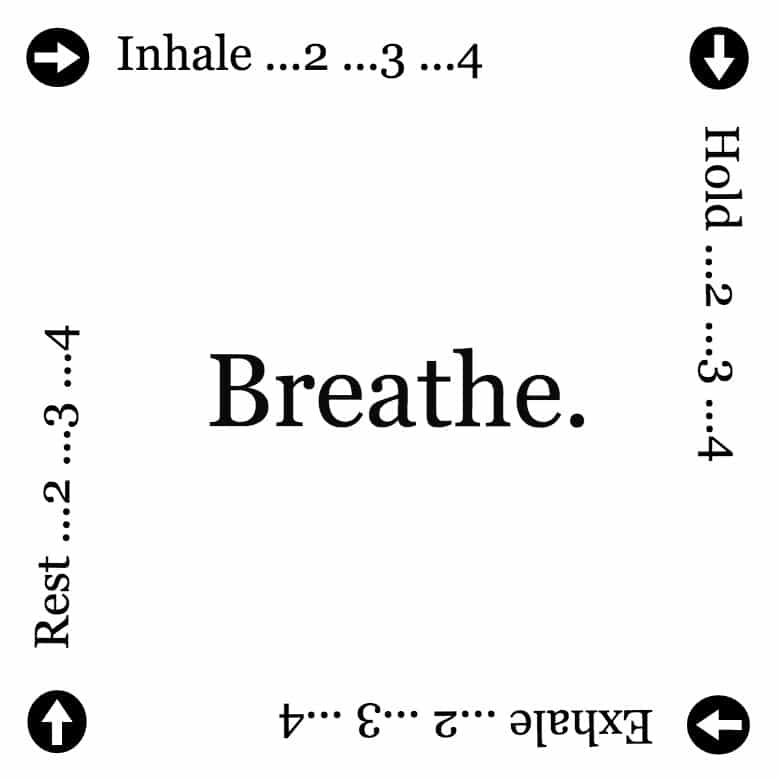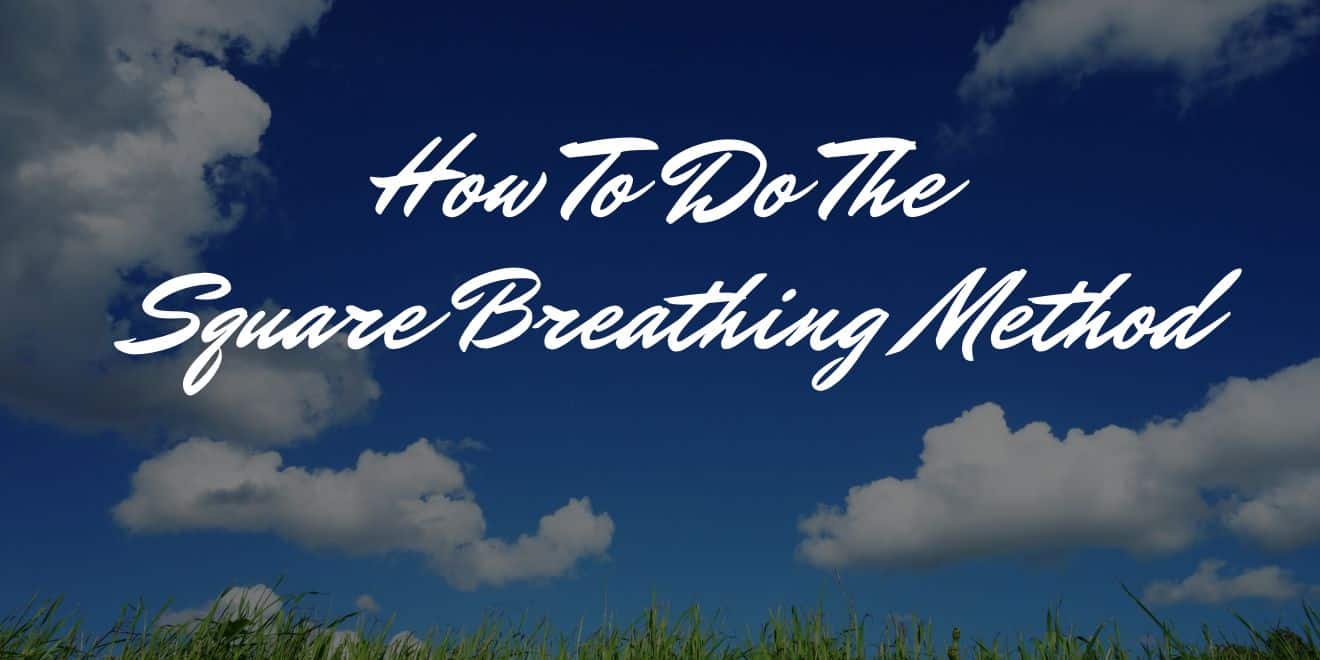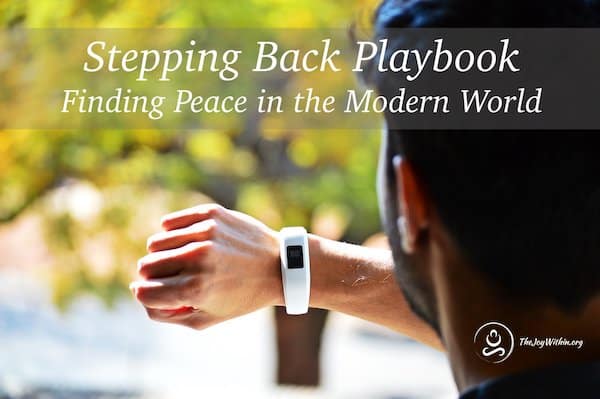Square breathing, also known as box breathing or the 4×4 technique, is a powerful breath exercise that can help you to quickly change your body’s energy, reduce stress, and calm your mind.
It is a really great way to step back and reset your energy whenever you feel stressed or triggered, but don’t necessarily have time to sit down for a full meditation practice.
In this post, I’ll explain what square breathing is and how you can use it to raise your energy and awareness.
What Is Square Breathing?
The basic idea behind square breathing is to learn how to even out your breath so that it is slightly longer and more consistent than your typical breathing pattern.
The aim is to be consistent with the length of each of the 4 parts of your breath:
- Inhalation
- Pause after Inhalation
- Exhalation
- Pause after Exhalation.
As you begin to breathe in longer, more even cycles, you immediately begin to relax the mind, improve the flow of oxygen to the brain, and spark more intuitive, clear, and productive thoughts.
This breath exercise is also known as the box technique, because you can visualize the process using a simple box diagram.

As you practice the exercise, you can imagine yourself moving through each side of the square, creating clearly defined movements to your breath.
How To Do Box Breathing Using a 4×4 Count
To begin, simply exhale all of the air from your body. I like to add a couple of long, full inhalations followed by loud exhalations (a strong “sighing” feel) before beginning the exercise.
This helps to clear the space and prepare you for the practice.
Then, when you are ready to begin, follow these 4 simple steps:
- Inhale slowly for 4 seconds.
- Hold the breath in for 4 seconds.
- Exhale slowly for 4 seconds.
- Rest with the breath out for 4 seconds.
Tips for Practicing a 4-Part Breath
Like so many of the breath techniques we cover, square breathing is both incredibly simple and can take much practice to master.
One of the main benefits of this breath lies in its simplicity, as you can do it anytime, anywhere, for any amount of time that you choose. That said, here are a few tips for getting started:

Practice with Good Posture
The first tip to make the most of this breath exercise is to make sure you practice with good posture. While there is no one “right way” to do this, generally it is best if you sit comfortably with an erect spine.
Sitting upright encourages the free flow of air through your torso, and, if you keep your shoulders relaxed, pulling down slightly, you are able to ease the physical body into the breath, helping to improve your relaxation, comfort, and ease.
If you are not comfortable sitting cross-legged on the floor or on a meditation cushion, it is perfectly acceptable to sit upright in a chair. For best results, sit towards the front of the chair, with your feet firmly planted on the ground.
Read more about how to choose a meditation posture in this post.
Try to Lengthen the Count Over Time
Another great way to expand your box breathing technique is to practice lengthening the breath over time.
You can do this either by keeping the 4-count practice while gradually slowing down the pace at which you count, or you can work on increasing the count to 6 or 8 seconds for each part of the breath.
As you slow down your breath, be sure that you maintain the calm, even pace for each of the 4 parts of the breath cycle. If you slow down your inhalation and exhalation, but find you are gasping for air during the rest, or if you cannot comfortably hold your breath out, then that is a sign you have pushed yourself too far, and you should back up to the point at which you can maintain the steady flow of air.
Set a Clear Intention
Breath is the vehicle of consciousness and so, by its slow, measured observation and distribution, we learn to tug our attention away from external desires toward a judicious, intelligent awareness.
BKS Iyengar
Another great way to expand your breath practice is to set a clear intention.
Often, this intention could be as simple as wanting to reset your energy, stop random thoughts from running through your head, calm down if you were angry, or reduce stress if you were overwhelmed.
Setting an intention is an art within itself, so I recommend you read this post for more guidelines on how to apply intentions to your practice.
Combine Square Breathing with Other Pranayama
After you have practiced the square breathing method a few times, you can take your practice to the next level by incorporating other types of pranayama.
For example, the 4×4 breath pairs nicely with exercises like ujjayi or alternate nostril breathing, as these are other great methods designed to help you even out your breath and control the flow of air through your body.
You can click here for a full list of pranayama techniques you may want to try.
Create a Habit of Stepping Back
Lastly, I strongly recommend that you develop a habit of stepping back throughout your day to re-center and align your energy.
This box breathing method is an excellent way to do that, as it is a simple practice you could do for as little as 60 seconds at a time, interspersed throughout your day.
You might also want to combine it with the exercise I outline in the first lesson of my Stepping Back Playbook.
Create a free account to watch the video and learn how you can start applying it to your daily life.
Benefits of Square Breathing
There is a growing amount of clear scientific evidence that intentionally slowing your breath and focusing on a deep breathing exercise can help to clear the mind and calm your Autonomic Nervous System.
This is because slow, deep breathing has been shown to increase the carbon dioxide levels in your blood, which relaxes both the body and mind.
This means that box breathing benefits include an ability to:
- Lower stress levels
- Boost your mood
- Decrease blood pressure and heart rate
- Improve sleep and prevent insomnia.
Read more about other health benefits of conscious breathing, or check out this article from the Mayo Clinic to learn more.





